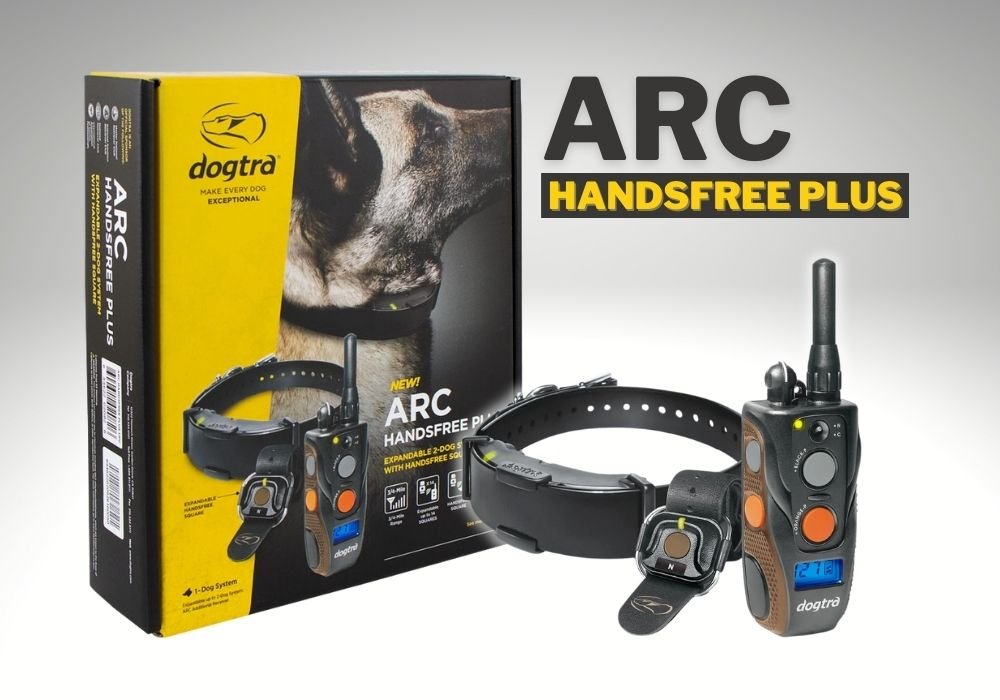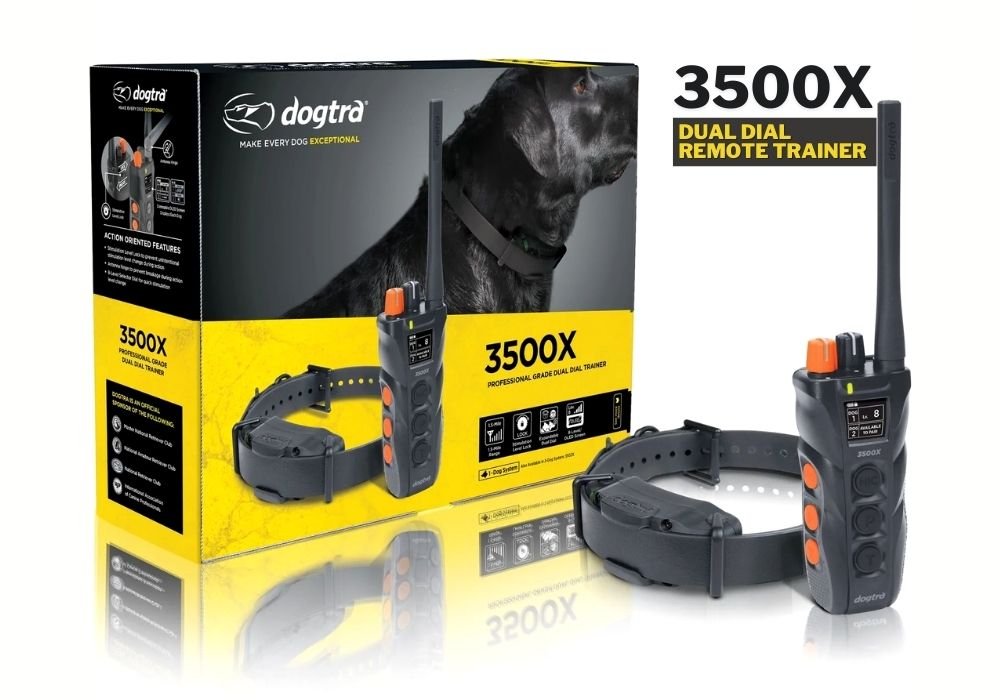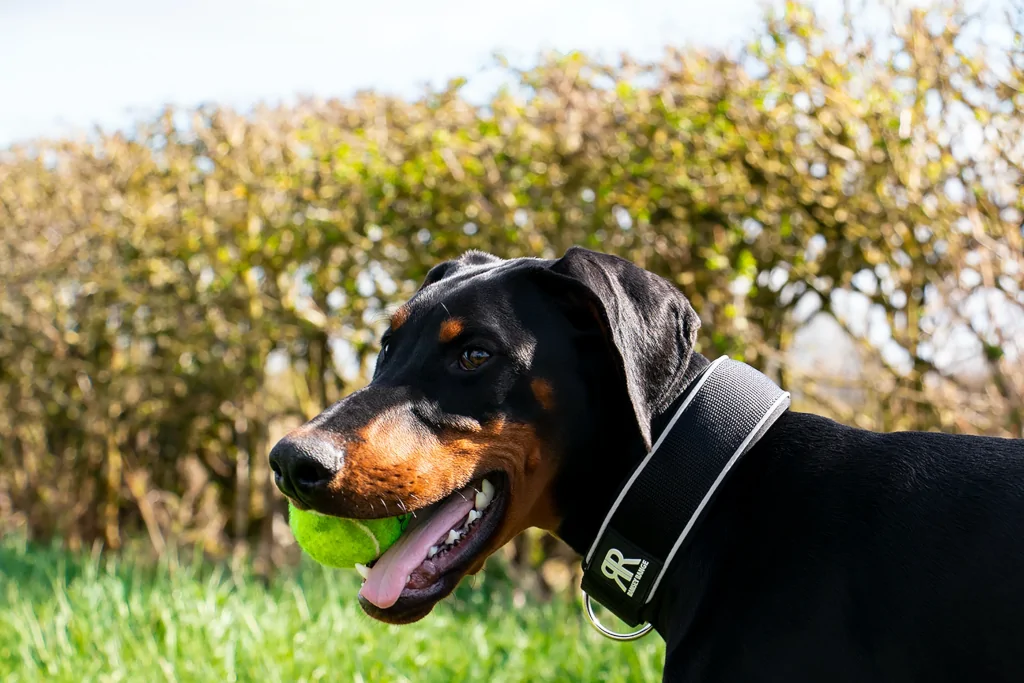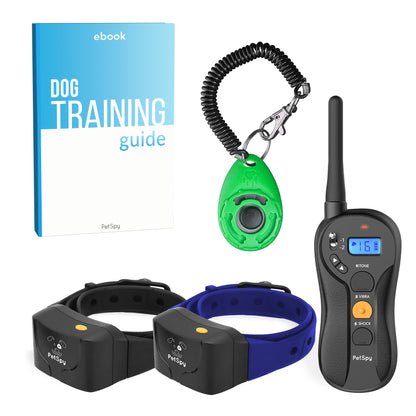Table of Contents
In “The Ultimate Guide to Remote Dog Training Collars,” you will discover all the essential information you need to know about using these innovative devices to train your furry friend from a distance. Whether you’re a seasoned pro or a first-time dog owner, this comprehensive guide will walk you through the different types of remote training collars, how they work, and the benefits they can provide for both you and your beloved pet. With the help of this ultimate guide, you’ll be equipped with the knowledge and confidence to effectively train your dog and strengthen your bond, all from the convenience of a remote control.
Understanding Remote Dog Training Collars
Remote dog training collars, also known as electronic dog collars or e-collars, are devices that are used to train dogs remotely. These collars consist of a receiver collar that is worn by the dog and a handheld remote transmitter that is operated by the trainer. The transmitter allows the trainer to send signals to the receiver collar, which in turn delivers a specific type of stimulation to the dog. Remote dog training collars have gained popularity among dog owners and trainers as an effective and convenient way to train dogs.
Different Types of Remote Dog Training Collars
There are several different types of remote dog training collars available on the market. It is important to understand the differences between these types in order to choose the right collar for your dog.
Static/Impulse Collars
Static or impulse collars deliver a mild electric stimulation to the dog when triggered by the trainer. These collars typically have multiple stimulation levels that can range from a very low level that is barely perceptible to the dog, to a higher level that is more noticeable. The purpose of the stimulation is to interrupt unwanted behavior and reinforce desired behavior.
Vibration Collars
Vibration collars use vibrations to communicate with the dog. When the trainer activates the vibration function through the remote, the collar will vibrate against the dog’s neck. This type of collar is often used as a more subtle alternative to static collars, especially for dogs that are sensitive to electrical stimulation.
Ultrasonic Collars
Ultrasonic collars emit a high-pitched ultrasonic sound that is inaudible to humans but can be heard by dogs. When the dog engages in unwanted behavior, such as excessive barking, the trainer can use the remote to emit the ultrasonic sound, which should distract the dog and discourage the behavior.
Spray Collars
Spray collars are designed to discourage unwanted behavior by delivering a burst of citronella or unscented spray in front of the dog’s nose when triggered. The spray is harmless but unpleasant for the dog, and it is meant to interrupt the behavior and redirect the dog’s attention.

Selecting the Right Remote Dog Training Collar
Choosing the right remote dog training collar for your dog requires careful consideration of various factors. Here are some key things to consider:
Identifying training goals
Before selecting a remote dog training collar, it is important to have a clear understanding of your training goals. Are you looking to address specific behavior issues, enhance obedience training, or simply improve communication with your dog? Identifying your training goals will help you choose a collar that is best suited for your needs.
Understanding your dog’s temperament
Every dog is different, and it is important to consider your dog’s temperament when selecting a remote training collar. Some dogs may be more sensitive and respond better to milder forms of stimulation, while others may require a stronger stimulus. Understanding your dog’s temperament will help you choose the most appropriate collar and stimulation level.
Choosing the appropriate stimulation level
Different remote collars offer different levels of stimulation. It is important to start with a low level and gradually increase it if necessary. The goal is to find the level that is effective for your dog without causing any distress or discomfort. Consult the collar’s instructions and seek professional guidance if needed.
Evaluating range and coverage
Consider the range and coverage of the remote collar. If you plan to use the collar in large open spaces or during outdoor activities, choose a collar with a longer range. On the other hand, if you primarily plan to use it indoors or in smaller areas, a shorter range may be sufficient.
Considering collar size and fit
It is crucial to choose a remote collar that fits your dog comfortably and securely. The collar should not be too tight or too loose, as it could affect the effectiveness of the stimulation and potentially cause discomfort for your dog. Measure your dog’s neck and select a collar that is adjustable and appropriate for their size.
Considering battery life and rechargeability
Remote collars require power to function, so it is important to consider the battery life and whether the collar is rechargeable or requires regular battery replacements. Collars with long battery life or rechargeable options are typically more convenient and cost-effective in the long run.
Waterproof or water-resistant features
If you plan to use the remote collar in wet conditions or during water activities, consider choosing a collar that is waterproof or water-resistant. This feature will ensure the durability and functionality of the collar even when exposed to moisture.
Training Your Dog with a Remote Dog Training Collar
Once you have chosen the right remote dog training collar, it is important to understand how to effectively train your dog using this tool. Here are some tips to help you get started:
Introduction to training sessions
Before using the remote collar, introduce your dog to the training sessions in a positive and relaxed manner. Allow your dog to become familiar with the collar and the training environment. Make sure your dog associates the collar with positive experiences, such as treats, play, and praise.
Positive reinforcement techniques
Utilize positive reinforcement techniques during the training sessions. Reward your dog with treats, praise, and affection when they exhibit the desired behavior. Positive reinforcement encourages your dog to repeat the behavior and strengthens the bond between you and your dog.
Learning to associate collar with commands
Introduce commands or cues that your dog will associate with specific behaviors. For example, associate a command like “sit” with the action of sitting. Pair the command with a stimulation from the collar and reward your dog when they respond correctly. Over time, your dog will learn to associate the collar stimulation with the command.
Starting with basic obedience training
Begin training with basic obedience commands such as sit, stay, come, and heel. Use the remote collar to reinforce these commands when needed. Be consistent, patient, and proceed gradually. Start in a low-distraction environment and gradually increase the difficulty level as your dog progresses.
Addressing behavior issues
If you are using a remote collar to address specific behavior issues, consult with a professional dog trainer or behaviorist for guidance. They can help you identify the underlying causes of the behavior and develop a tailored training plan to address it effectively.
Avoiding common training mistakes
When using a remote dog training collar, it is important to avoid common training mistakes. Never use the collar as a form of punishment or to intentionally cause harm to your dog. Always use the collar responsibly and in accordance with the manufacturer’s instructions and professional advice.

Using a Remote Dog Training Collar Safely and Ethically
Using a remote dog training collar requires responsibility and ethical considerations. Here are some guidelines to ensure the safe and ethical use of the collar:
Setting realistic expectations
Understand that remote dog training collars are tools that can aid in training, but they are not a magical solution. Set realistic expectations and be patient with the training process. Consistency, positive reinforcement, and proper training techniques are essential for success.
Avoiding excessive or inappropriate use
Use the remote collar sparingly and avoid excessive or inappropriate use. The collar should only be used to reinforce commands or address specific behavior issues. It should not be used continuously or as a substitute for proper training and socialization.
Understanding the risks of using remote collars
While remote collars can be effective training tools, it is important to understand and mitigate the risks associated with their use. Improper use or excessive stimulation levels can cause distress, fear, or even physical harm to your dog. Seek guidance from professionals and follow manufacturer instructions to minimize risks.
Ensuring proper fit and positioning
Make sure the remote collar is properly fitted and positioned on your dog’s neck. It should be snug but not too tight. Improper fit or positioning can affect the collar’s functionality and cause discomfort for your dog.
Monitoring your dog’s reactions and responses
Stay vigilant and observe your dog’s reactions and responses during training sessions. If you notice signs of stress, fear, or discomfort, stop using the collar immediately. Your dog’s well-being and comfort should always be the top priority.
Seeking professional guidance if needed
If you are unsure about how to properly use a remote dog training collar or encounter difficulties during training, seek professional guidance from a certified dog trainer or behaviorist. They can provide valuable advice, support, and guidance tailored to your specific needs and your dog’s individual circumstances.
Troubleshooting Common Issues with Remote Dog Training Collars
While remote dog training collars can be highly effective, some common issues may arise during their use. Here are some troubleshooting tips to help you address these issues:
Collar malfunctioning
If the remote collar is malfunctioning or not working as expected, check the battery and ensure it is properly charged or replaced. Make sure the collar and remote are securely paired and double-check the settings to ensure they are correct.
Unresponsiveness to stimulation
If your dog seems unresponsive to the stimulation from the remote collar, check the collar’s contact points. Ensure they make proper contact with your dog’s skin. If necessary, adjust the collar’s fit or contact points to ensure consistent and effective stimulation.
Inconsistent behavior changes
If you are not seeing consistent behavior changes despite using the remote collar, reassess your training techniques and consistency. It is possible that your dog requires additional training or that the issue is multifaceted and requires a comprehensive approach.
Adjusting the stimulation level
If you find that the stimulation level is too high or too low for your dog, adjust it accordingly. Begin with the lowest effective level and gradually increase or decrease it as needed. Consult professional trainers or behaviorists for guidance on finding the appropriate stimulation level for your dog.
Ensuring proper collar contact
Consistently check that the collar is properly positioned and securely fastened on your dog’s neck. It should sit snugly but comfortably, with the contact points making direct contact with the skin. The collar’s functionality depends on proper contact, so regular checks are essential.

Alternatives to Remote Dog Training Collars
While remote dog training collars can be effective tools, they may not be the right choice for every dog or every training scenario. Here are some alternative training methods and tools to consider:
Positive reinforcement training methods
Positive reinforcement training methods focus on rewarding desired behavior rather than using corrective measures. This approach can be effective in teaching dogs new behaviors and strengthening their bond with their owners. Treats, praise, and rewards are used to reinforce positive behavior.
Clicker training
Clicker training is a type of positive reinforcement training that utilizes a handheld clicker to mark and reinforce desired behaviors. When the dog performs a desired behavior, the trainer clicks the clicker and immediately rewards the dog. The clicker serves as a clear and consistent marker for the dog.
Targeted professional dog training
Working with a professional dog trainer or behaviorist can be immensely beneficial in addressing specific behavior issues and improving your overall training techniques. They can provide personalized guidance, develop a training plan, and offer ongoing support.
Training aids and tools
There are various training aids and tools available that can complement your training efforts. These include treat pouches, long leads, puzzle toys, and interactive games that promote mental stimulation and encourage positive behavior.
Proper Maintenance and Care for Remote Dog Training Collars
To ensure the longevity and optimal functionality of your remote dog training collar, it is important to properly maintain and care for it. Here are some maintenance tips:
Cleaning the collar
Regularly clean the remote collar according to the manufacturer’s instructions. Remove any dirt, debris, or buildup that may accumulate on the collar. Avoid using harsh chemicals or submerging the collar in water, unless specifically stated by the manufacturer.
Inspecting for wear and tear
Periodically inspect the collar for any signs of wear and tear. Check for any fraying, cracks, or damage to the collar or the contact points. If you notice any damage, discontinue use and contact the manufacturer for repairs or replacement.
Replacing batteries or charging
If your remote collar operates on batteries, replace them as needed to ensure uninterrupted functionality. If the collar is rechargeable, make sure to keep it charged regularly according to the manufacturer’s instructions.
Storing the collar properly
When not in use, store the remote collar in a safe and dry place, away from extreme temperatures or direct sunlight. Proper storage will help maintain the collar’s functionality and prolong its lifespan.

Legal Considerations when Using Remote Dog Training Collars
Before using a remote dog training collar, it is essential to be aware of any laws and regulations regarding their use. Here are some legal considerations:
Laws and regulations regarding remote collars
Research and familiarize yourself with any laws or restrictions specific to your location regarding the use of remote dog training collars. Some areas may have specific regulations or guidelines that must be followed.
Legal restrictions in certain areas
In some areas, the use of remote dog training collars may be restricted or prohibited. Make sure to check local bylaws and regulations to ensure compliance.
Public perception and ethical concerns
The use of remote dog training collars can be a topic of debate and ethical consideration. Be mindful of public perception and respect the opinions and concerns of others. Engage in open conversations and consider alternative training methods if necessary.
Conclusion
Remote dog training collars can be a valuable tool in training and communicating with your dog. By understanding the different types of collars, selecting the right one for your dog, and using it safely and ethically, you can enhance your training efforts and establish a stronger bond with your canine companion. Remember to always prioritize your dog’s well-being and comfort, and seek professional guidance whenever needed. Happy training!




